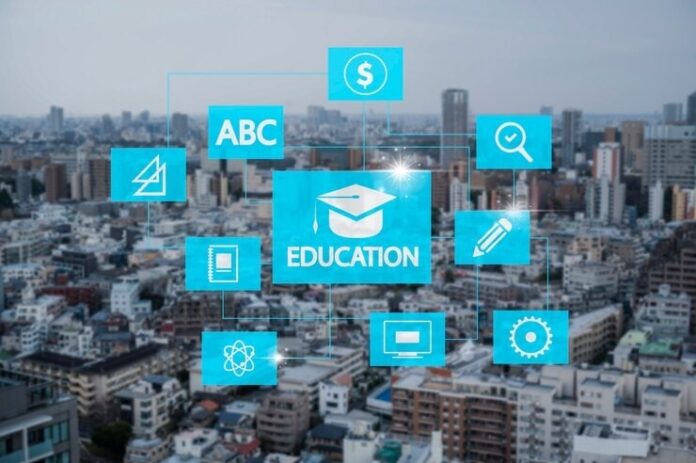In today’s rapidly evolving world, technology has become an integral part of our lives, reshaping the way we live, work, and learn. The education sector, in particular, has witnessed a transformative shift with the integration of educational technology, or edtech. By embracing these innovative tools and platforms, students and teachers alike can unlock a world of possibilities, enhancing the learning experience and preparing learners for the digital age.
Key Takeaways
- Educational technology offers numerous benefits that enhance learning outcomes, improve engagement, and streamline teaching processes.
- It provides increased engagement and motivation through multimedia instruction and gamification.
- It enables differentiated and personalized instruction through adaptive software and online tools.
- It grants access to a wider variety of learning materials, including online resources, educational videos, and digital textbooks.
- It offers efficient teaching and classroom management through automation, instant feedback, and learning analytics.
- It fosters creativity, problem-solving skills, collaboration, and communication through immersive technologies and online platforms.
- It prepares students for the digital age by developing essential digital skills and literacy.
Unlocking the Power of Educational Technology
The integration of technology into the educational landscape has revolutionized the way we approach teaching and learning. From interactive whiteboards to virtual reality simulations, educational technology has opened up a world of possibilities, captivating the minds of learners and empowering educators to deliver engaging and effective instruction.
In this digital age, it’s crucial for educational institutions to embrace the power of technology, as it not only enhances the learning experience but also equips students with the necessary skills to thrive in the modern workforce. Let’s explore the top 10 benefits that educational technology brings to the table for both students and teachers.
Enhanced Learning Opportunities
- Increased Engagement and Motivation Gone are the days of monotonous lectures and dry textbook content. Educational technology has the power to captivate students’ attention through multimedia instruction and gamification. Interactive whiteboards, educational games, and immersive simulations make learning fun and engaging, fostering a love for learning that transcends the traditional classroom setting.
- Differentiated and Personalized Instruction Every student learns at a different pace and has unique learning styles. With the help of adaptive software and online tools, teachers can tailor instruction to meet the individual needs of each learner. Personalized learning paths, customized assessments, and real-time feedback ensure that no student is left behind, allowing them to progress at their own pace and master concepts more effectively.
- Access to a Wider Variety of Learning Materials The wealth of online resources, educational videos, and digital textbooks available at our fingertips is truly remarkable. Students can access a vast array of learning materials that cater to diverse learning needs and preferences. From interactive simulations to virtual field trips, these resources provide a rich and engaging learning experience that extends far beyond the traditional classroom walls.
Improved Teaching and Classroom Management
- Efficient Teaching and Classroom Management Educational technology offers a myriad of tools to streamline teaching and classroom management processes. Automation of tasks such as grading, attendance tracking, and data analysis frees up valuable time for teachers, allowing them to focus on what truly matters – delivering high-quality instruction. Additionally, learning analytics provide valuable insights into student performance, enabling data-driven decision-making and targeted interventions.
- Teacher Productivity and Efficiency Digital tools have revolutionized the way teachers plan lessons, track student progress, and collaborate with colleagues. Gone are the days of endless paperwork and tedious manual processes. With online lesson planning platforms, cloud-based grading systems, and digital attendance tracking, teachers can maximize their productivity and efficiency, freeing up time for more meaningful interactions with students.
- Professional Development and Collaboration Technology has made it easier than ever for teachers to engage in professional development and collaborate with fellow educators from around the globe. Online training sessions, webinars, and access to vast educational resources empower teachers to stay up-to-date with the latest teaching methodologies, share best practices, and continuously enhance their skills.
Fostering Creativity and Problem-Solving Skills
- Creativity and Problem-Solving Immersive technologies like virtual reality, augmented reality, and coding platforms offer boundless opportunities for students to unleash their creativity and develop critical problem-solving skills. By simulating real-world scenarios or creating their own digital worlds, learners can explore, experiment, and think outside the box, preparing them for the challenges of the 21st century.
- Collaboration and Communication In today’s interconnected world, collaboration and effective communication are essential skills. Online platforms and digital tools facilitate group projects, peer-to-peer interaction, and real-time feedback, enabling students to develop these crucial competencies. By working together on shared digital canvases or engaging in online discussions, students learn to navigate diverse perspectives and collaborate effectively.
- Remote Access and Flexibility One of the greatest advantages of educational technology is the ability to access learning materials and tools from anywhere, at any time. This flexibility empowers students to learn at their own pace, outside the confines of a traditional classroom setting. Whether it’s reviewing lessons, participating in online discussions, or completing assignments, the seamless integration of technology into education provides unparalleled convenience and accessibility.
Preparing Students for the Digital Age
- Digital Skills and Literacy In the digital age, possessing strong digital skills and literacy is crucial for success in both personal and professional endeavors. By incorporating technology into the classroom, students develop essential competencies such as coding, digital communication, and responsible online behavior. These skills not only enhance their learning experience but also prepare them for modern life and future careers.
- Preparation for the Future The world is rapidly evolving, and the skills required for success are constantly changing. By embracing educational technology, we equip students with the necessary tools to adapt and thrive in an ever-changing landscape. From developing skills in technology, communication, and collaboration to fostering a growth mindset and lifelong learning habits, educational technology plays a pivotal role in preparing students for the future.
- Enhancing Mental Well-being In addition to academic benefits, educational technology can also contribute to students’ mental well-being. Digital tools for stress reduction, mindfulness exercises, and cognitive training can help students manage their emotions, improve focus, and develop resilience. By prioritizing mental health, educational institutions create a supportive learning environment that nurtures the whole student.
Conclusion
As we navigate the digital age, the integration of educational technology has become an imperative for educational institutions around the world. The benefits it offers are numerous and far-reaching, from enhancing learning outcomes and fostering engagement to streamlining teaching processes and preparing students for the future.
By embracing the power of educational technology, we not only equip learners with the skills they need to thrive in the modern world but also cultivate a love for learning that transcends the boundaries of the traditional classroom. It’s an exciting time for education, and the possibilities are endless when we harness the potential of technology to create engaging, personalized, and transformative learning experiences.
So, let us embrace the opportunities that educational technology presents and work towards a future where every student has access to the tools and resources they need to unlock their full potential.








